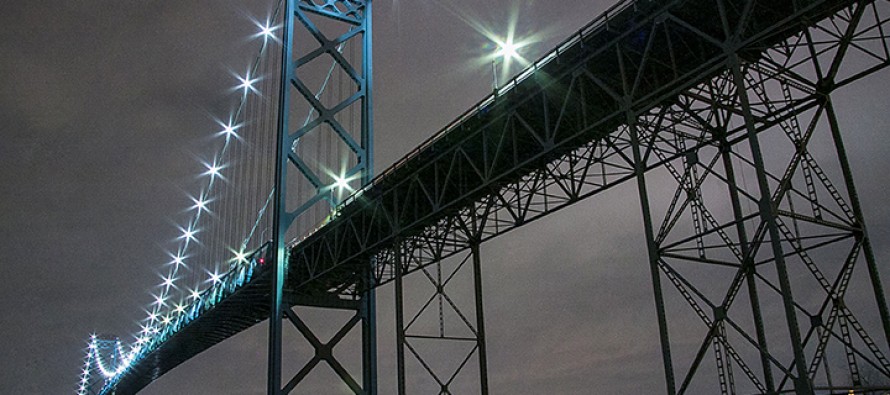A long way down

By Aaron Lombardi
People have been jumping off the Ambassador Bridge since its construction but it’s a subject many don’t want to discuss.
Not all jumpers are Canadian, some are visitors.
A man crossing the Windsor-Detroit border tells the patrol officer he is going to Canada to visit family. He drives onto the Ambassador Bridge, overlooking the Detroit River and the skyline of two cities in separate countries. He pulls his car to the side of the road, walks to the edge and jumps.
Since its completion in 1930, the Ambassador Bridge has served as an important link in Canada’s trade with the United States.
However, since 1965 the bridge has recorded 20 known suicides from people claiming to be crossing the border. Statistics show that before the 1960s there were more jumpers when it was not uncommon to see people walking or riding bicycles across the bridge.
“We won’t say it happens a lot, but it has happened,” said Doug Desjardins, a Windsor firefighter. “Nobody really wants to know about that kind of stuff.”
The border patrol and its restrictions could be a factor in the prevention of a large number of jumpers. The Golden Gate Bridge in San Francisco has recorded some of the highest number of suicide jumpers in the world, possibly due to the fact it is not a border-based bridge. The Ambassador Bridge does not use suicide nets like most areas where suicides are a common problem like the Apple assembling factory in China where eight people jumped to their deaths in a span of three months.
“That’s something the Police normally deal with,” said Desjardins, who is also a Scuba diver.
“I’ve never had to do a search and rescue or talk anyone down from jumping.”
The bridge has seen accidental deaths as well, with 10 workers having been killed during its construction in 1930. In 2000, Windsor painter Jaime Barker died after falling from the bridge as did a Detroit painter who also fell to his death when a scaffolding broke from beneath him. In July 2015 an American man jumped from the bridge and fell to the water 152 feet below.
Rick Larue, 70, was an iron worker on the Ambassador Bridge before his retirement in the ’90s. Although Larue was reluctant to talk about workplace accidents on the bridge he shared stories of the disregard for safety during that time.
“It was a different time, back in the 70s we never wore harnesses or hard hats, anyone who did was teased,” said Larue laughing. “But safety is definitely the most important thing.”
The iron workers were placed in charge of any repairs that had to be made on the bridge. These would include welding and replacing any damaged equipment that was deemed unsafe for further use. Iron working is considered a dangerous job due to the working environment. They are required to work in heights, tight spaces that can be slick with oil and coolant and to use heavy equipment.
“Whenever we were on the bridge we were very busy, but we were always extra careful whenever we had to work high up top where you see the bridge sign,” said Larue.
With a second bridge to be built in 2020 only time will tell whether it will include precautions for suicide.


